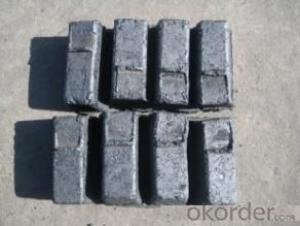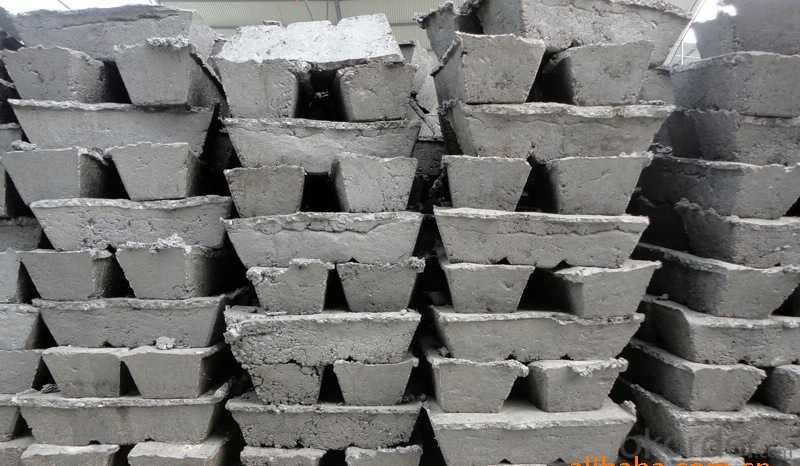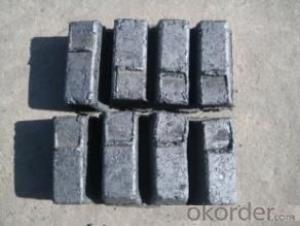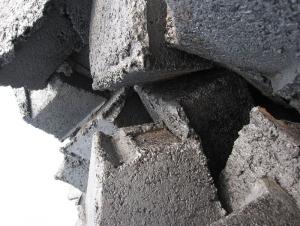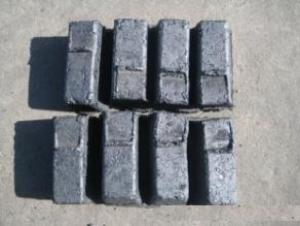Carbon Electrode Paste block with high quliaty
- Loading Port:
- Tianjin
- Payment Terms:
- TT OR LC
- Min Order Qty:
- 20 m.t.
- Supply Capability:
- 3000 m.t./month
OKorder Service Pledge
OKorder Financial Service
You Might Also Like
Spcifications
1:carbon eletrode paste
2:for ferroalloy,calcium carbide manufacture
3:HS 3801300000,YB/T5212-1996,ISO9001:2008
Product Description
Carbon Electrode Paste is a self-baking electrode used in submerged arc furnaces for delivering power to the charge mix. Electrode Paste is added to the top of the electrode column in either cylindrical or briquette form. As the paste moves down the electrode column the temperature increase causes the paste to melt and subsequently bake forming a block of electrically conductive carbon. Electrode Paste is essentially a mix of Electrically Calcined Anthracite (ECA) or Calcined Petroleum Coke (CPC) with Coal Tar Pitch.
Graphite/Carbon Electrode Paste
Specification/Item
Ash 4.0%max5.0%max 6.0%max7.0% Max9.0% Max11.0% Max
VM 12.0%-15.5%12.0%-15.5%12.0%-15.5%9.5.0%-13.5%11.5%-15.5%11.5%-15.5%
Strength
Compress 18.0Mpa Min17.0Mpa Min15.7Mpa Min19.6Mpa Min19.6Mpa Min19.6Mpa Min
Specific 65μΩm Max68μΩm Max75μΩm Max80μΩm Max90μΩm Max90μΩm Max
Resistance
Bulk Density1.38G/CM3 Min1.38G/CM3 Min1.38G/CM3 Min1.38G/CM3 Min1.38G/CM3 Min1.38G/CM3 Min
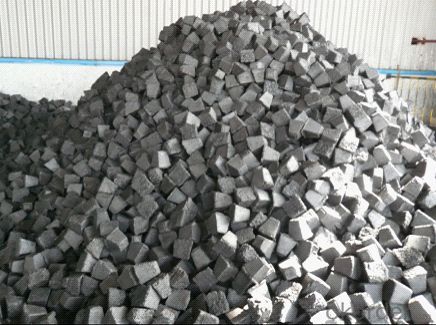
- Q: What is carbon neutral shipping?
- Carbon neutral shipping refers to a method of transportation that offsets or eliminates the greenhouse gas emissions produced during the shipping process. This can be achieved through various measures like using renewable energy sources, energy-efficient technologies, or purchasing carbon credits to compensate for the emissions. The goal is to balance out the amount of carbon dioxide released into the atmosphere, making the shipping process environmentally sustainable.
- Q: How do fossil fuels release carbon into the atmosphere?
- Combustion, a process in which fossil fuels like coal, oil, and natural gas are burned for energy, results in the release of carbon into the atmosphere. This carbon, which had been trapped underground for millions of years, is converted into carbon dioxide (CO2) gas. During combustion, the carbon and hydrogen atoms present in fossil fuels react with oxygen from the air, producing not only CO2 but also water vapor (H2O) and heat. The released CO2 is then emitted into the atmosphere, where it acts as a greenhouse gas. The burning of fossil fuels in various sectors such as transportation, electricity generation, and industrial processes plays a significant role in the escalating levels of atmospheric CO2. The continuous extraction and rapid burning of these fuels have led to a substantial increase in the concentration of CO2 in the Earth's atmosphere over the past century. This rise in atmospheric CO2 is a primary driver of climate change, as CO2 acts as a heat-trapping gas, contributing to the greenhouse effect. The greenhouse effect occurs when the Earth's atmosphere retains the heat radiated from the surface, resulting in a global temperature increase. Therefore, the release of carbon into the atmosphere from fossil fuels is a major concern due to its significant role in climate change and the subsequent environmental and societal impacts. To address these effects, there is a growing global effort to transition towards renewable and cleaner energy sources, reduce fossil fuel consumption, and implement sustainable practices.
- Q: What is electrical carbon?
- Carbon and graphite have the following characteristics:(1) it has good conductivity and thermal conductivity.2. It has excellent properties of high temperature resistance, can work at 3000 degrees under anaerobic condition, and has good mechanical strength and thermal shock resistance at high temperature.(3) good chemical stability, not adhesion to liquid metal at high temperature, only with strong oxidant.(4) graphite has good self lubrication characteristics.The electricity production process is as follows: firstly, the carbon powder and adhesive agent he mixed pressed carbon matrix material. And then send the person inside the furnace and high temperature sintering, the final form of electrical carbon products.
- Q: What does carbon nanotubes (5,5) in (5,5) mean?
- 1. will be assumed as the corresponding nanotube (cut after) / graphene planar monolayer of carbon atoms (Figure 1)For hexagonal packing, marking the best method for the definition of the two unit vector (unit vector), the A1 and A2 arrow.A1 and A2 interval is 60 degrees.2. (5,5) refers to 5<a1>+5<a2>, (note that is a vector addition) more widely expressed as:(m, n) = m*<a1> + n*<a2>;
- Q: How does carbon dioxide affect climate change?
- Climate change is significantly influenced by carbon dioxide (CO2), a greenhouse gas. CO2 is released into the atmosphere through natural processes like volcanic eruptions or human activities such as burning fossil fuels. Its presence in the atmosphere traps heat from the sun, preventing it from escaping back into space. This phenomenon is known as the greenhouse effect. Human activities, particularly the burning of fossil fuels like coal, oil, and natural gas, have led to an imbalance in the natural carbon cycle. This has caused an increase in CO2 concentration in the atmosphere, resulting in a rapid rise in global CO2 levels. Consequently, the Earth's surface is warming, and climate patterns are changing. Since the Industrial Revolution, the burning of fossil fuels has significantly elevated atmospheric CO2 levels, leading to an increase in the Earth's average temperature. This temperature rise impacts various aspects of the climate system, causing a range of effects. One of the most visible outcomes of increased CO2 levels is global warming. This warming leads to the melting of glaciers and polar ice, which in turn raises sea levels. Rising sea levels pose a threat to coastal areas and low-lying islands, causing increased flooding, coastal erosion, and potential displacement of communities. Moreover, elevated CO2 levels contribute to more frequent and intense heatwaves, droughts, and wildfires in many regions. These extreme weather events negatively affect agriculture, water availability, and human health. Carbon dioxide also disrupts ecosystems by altering the growth patterns and distribution of plant and animal species. Changes in temperature and precipitation patterns, driven by increased CO2 levels, disturb the delicate balance of life, leading to biodiversity loss and potential species extinction. To mitigate the impacts of CO2 on climate change, it is crucial to reduce greenhouse gas emissions. Transitioning to renewable energy sources, improving energy efficiency, and adopting sustainable practices are important steps in reducing CO2 emissions and limiting the extent of climate change. Additionally, efforts to restore and protect forests and other natural carbon sinks can help absorb and store CO2, thus mitigating its effects on the climate.
- Q: How is activated carbon produced?
- Activated carbon is created by a process known as activation, which involves heating carbon-rich materials (such as wood, coal, or coconut shells) at high temperatures without oxygen. Activation can be done in two main ways: physically or chemically. In physical activation, the carbon-rich material is first carbonized by heating it to a high temperature. This creates a char with a high carbon content. Then, an oxidizing gas (like steam or carbon dioxide) is used to treat the char at temperatures ranging from 600 to 900 degrees Celsius. This causes the char to expand and develop a porous structure. The resulting material is washed and dried to eliminate any impurities, resulting in activated carbon. On the other hand, chemical activation involves saturating the carbon-rich material with a chemical activating agent (such as phosphoric acid, zinc chloride, or potassium hydroxide). The impregnated material is then heated to temperatures between 400 and 800 degrees Celsius. This process chemically reacts with the carbon, forming a porous structure. The activated carbon is washed and dried to remove any remaining chemicals. Both physical and chemical activation methods yield activated carbon with a large surface area and a network of pores. These pores enhance the adsorption capacity of the activated carbon, enabling it to effectively capture and eliminate impurities, contaminants, and pollutants from gases and liquids.
- Q: How does carbon impact ocean acidity?
- Carbon impacts ocean acidity through a process called ocean acidification. When carbon dioxide (CO2) from the atmosphere is absorbed by seawater, it reacts with water molecules to form carbonic acid. This acidification process lowers the pH levels of the ocean, making it more acidic. The primary source of carbon dioxide in the atmosphere is human activities such as burning fossil fuels, deforestation, and industrial processes. As the concentration of CO2 increases in the atmosphere due to these activities, more and more of it is absorbed by the oceans. The increase in acidity has several detrimental effects on marine life. Many organisms that have calcium carbonate shells, such as coral reefs, shellfish, and some plankton species, are particularly vulnerable to ocean acidification. The increased acidity makes it harder for these organisms to build and maintain their shells, leading to reduced growth rates and increased mortality. Ocean acidification also affects the entire marine food web. It disrupts the balance between predators and prey, as some species of plankton are less able to develop and survive in acidic conditions. This can have cascading effects on the entire ecosystem, impacting fish populations, marine mammals, and ultimately even humans who rely on seafood for sustenance. Additionally, ocean acidification can have significant economic impacts. Commercial fisheries and tourism industries that depend on healthy marine ecosystems can suffer due to the decline in fish populations and the degradation of coral reefs. To mitigate the impacts of carbon on ocean acidity, it is crucial to reduce carbon dioxide emissions and transition to cleaner and more sustainable energy sources. Taking steps to protect and restore marine ecosystems, such as creating marine protected areas and implementing sustainable fishing practices, can also help to mitigate the effects of ocean acidification.
- Q: What are the impacts of carbon emissions on indigenous communities?
- Indigenous communities are greatly affected by carbon emissions, which have significant impacts on their environment, culture, health, and overall well-being. One of the main consequences is the degradation of their traditional lands and natural resources, which are crucial for their livelihoods, including hunting, fishing, and agriculture. The increase in carbon emissions leads to climate change, resulting in changes in temperature, weather patterns, and ecosystems. This disrupts the delicate balance of their ecosystems and makes it more challenging for them to sustain their way of life. The loss of traditional lands and resources also has profound cultural implications for indigenous communities. Their connection to the land is deeply rooted in their identity and spirituality. When their lands are degraded or destroyed due to carbon emissions, it erodes their cultural practices, knowledge, and traditions. This loss of cultural heritage affects not only indigenous communities but also the global society, as their unique knowledge about sustainable land management and conservation practices can offer valuable insights for addressing climate change and protecting the planet. Moreover, carbon emissions contribute to air pollution, which severely impacts the health of indigenous communities. Many indigenous communities live near industrial facilities or fossil fuel extraction sites, leading to increased exposure to pollutants such as particulate matter, sulfur dioxide, and nitrogen oxides. These pollutants cause respiratory illnesses, cardiovascular diseases, and other health issues, disproportionately affecting vulnerable members of these communities, including children and the elderly. In addition to immediate health impacts, the long-term consequences of carbon emissions, such as rising sea levels and extreme weather events, pose further threats to the existence of indigenous communities. Many indigenous communities reside in low-lying coastal areas or remote regions that are more susceptible to the effects of climate change, including coastal erosion, flooding, and loss of traditional food sources. These changes not only disrupt their way of life but also force them to consider relocation, resulting in the loss of their cultural identity and connection to their ancestral lands. Addressing carbon emissions and mitigating climate change is crucial for the well-being and survival of indigenous communities. It involves recognizing their rights to their traditional lands, resources, and self-determination, as well as involving them in decision-making processes regarding environmental conservation. Supporting sustainable development projects that prioritize local needs and indigenous knowledge can help foster resilient communities that can adapt to the changing climate. Ultimately, by reducing carbon emissions and protecting the environment, we can preserve the cultural diversity and invaluable contributions of indigenous communities for future generations.
- Q: What is carbon nanowire?
- Carbon nanowire is a nanoscale structure composed of carbon atoms arranged in a wire-like shape, which exhibits exceptional electrical, thermal, and mechanical properties.
- Q: Can carbon in barbecue cause cancer? Can carbonated food cause cancer?
- Eat barbecue are carcinogenic, because the meat directly on the heat under the grill, the decomposition of fat droplets in the charcoal, and then with the meat proteins, it will produce a carcinogen called benzopyrene. Experts explained that if people regularly eat food contaminated by benzopyrene, carcinogens can accumulate in the body and cause stomach cancer and bowel cancer.
Send your message to us
Carbon Electrode Paste block with high quliaty
- Loading Port:
- Tianjin
- Payment Terms:
- TT OR LC
- Min Order Qty:
- 20 m.t.
- Supply Capability:
- 3000 m.t./month
OKorder Service Pledge
OKorder Financial Service
Similar products
Hot products
Hot Searches
Related keywords
